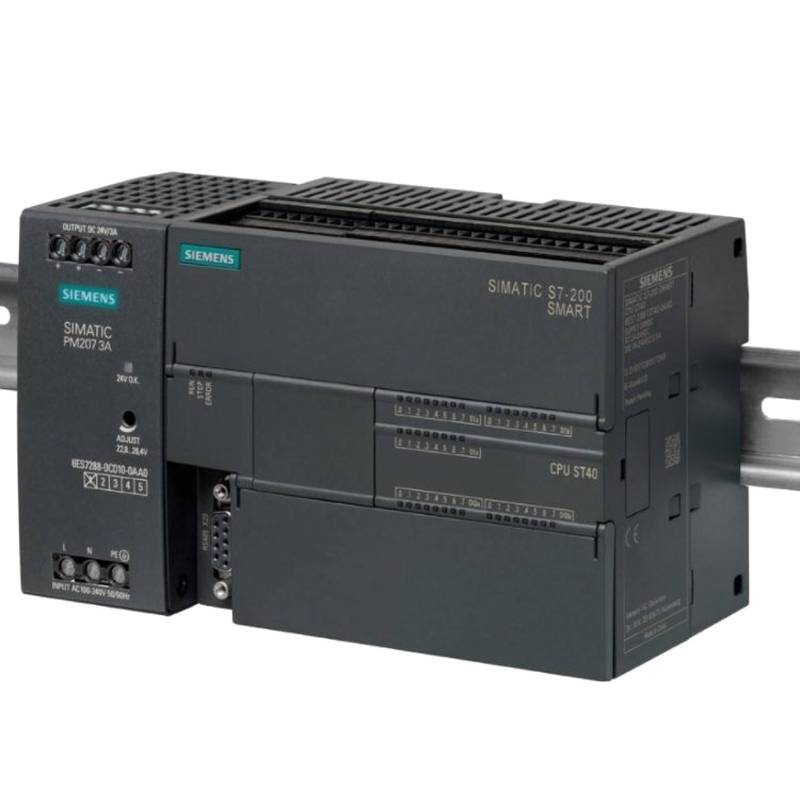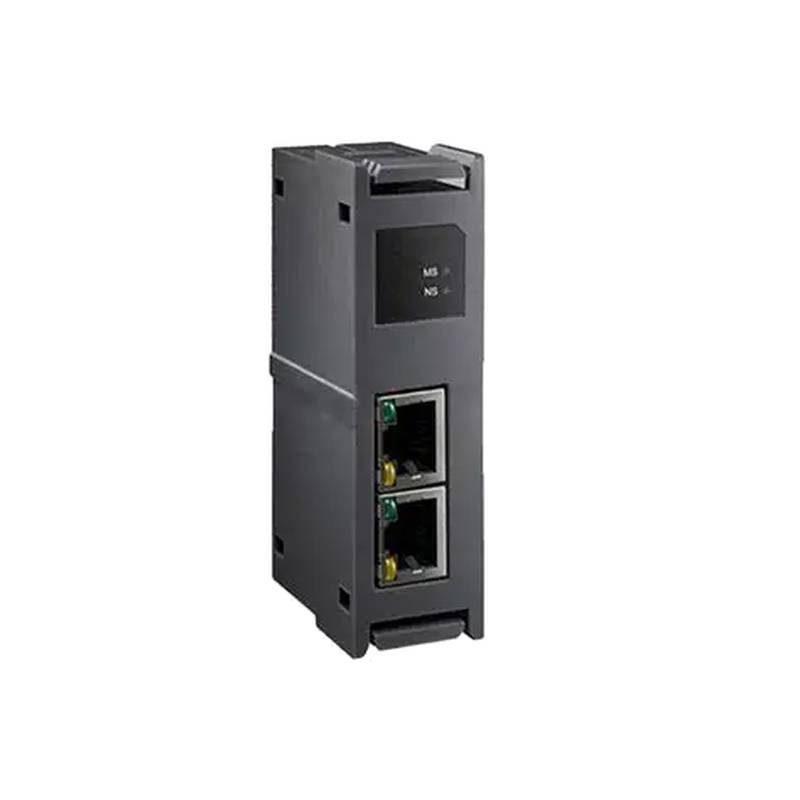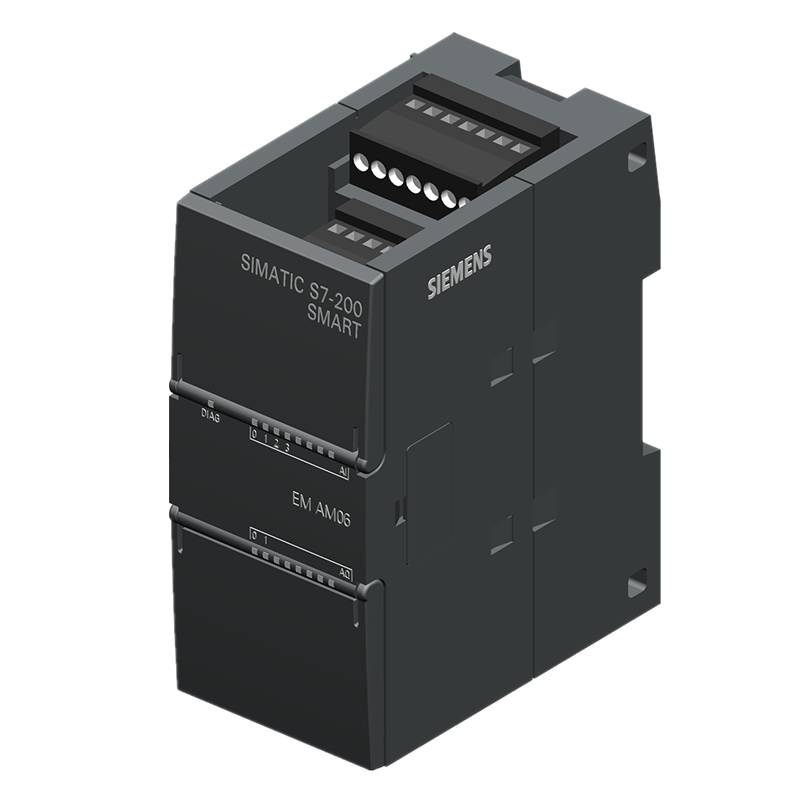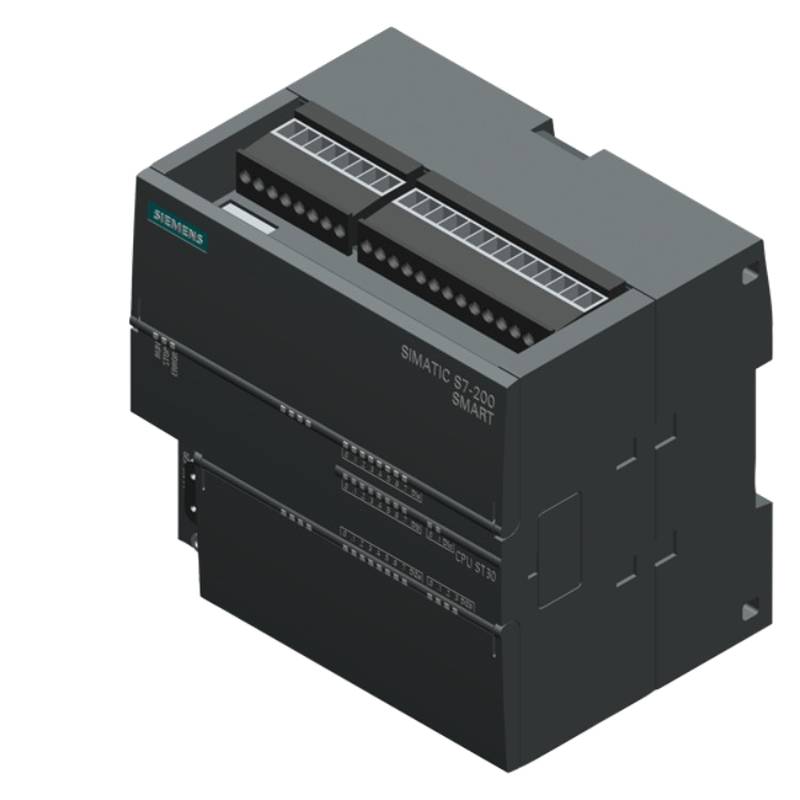
The Siemens 6ES7288-2DR32-0AA0 is a high-performance, large-capacity relay output module designed for demanding industrial automation applications. This module offers robust control capabilities with a significant number of output channels, making it ideal for complex machinery and process control systems. Key advantages include its substantial relay capacity, enabling the switching of high power loads, and its integration within the S7-1200 PLC family, ensuring seamless compatibility and powerful processing. Essential technical parameters, such as the number of outputs, voltage ratings, and current handling capabilities, define its suitability for various industrial environments.
Product Specifications
| Feature | Specification |
| :---------------------- | :------------------------------------ |
| Product Type | Relay Output Module |
| Siemens Order Number | 6ES7288-2DR32-0AA0 |
| Compatible PLC Series | SIMATIC S7-1200 |
| Number of Outputs | 16 |
| Output Type | Relay |
| Max. Switching Voltage | 250 VAC / 30 VDC |
| Max. Switching Current | 6 A per channel |
| Ambient Temperature | 0°C to 50°C (32°F to 122°F) |
| Dimensions (W x H x D) | 45 mm x 100 mm x 75 mm |
| Mounting | DIN rail |
| Protection Rating | IP20 |
Core Features & Market Positioning
The Siemens 6ES7288-2DR32-0AA0 distinguishes itself through its high-density relay outputs, offering 16 channels in a compact form factor, a significant advantage for panel builders and system integrators facing space constraints. Its positioning as a "high-performance, large-capacity" module directly addresses the market's need for reliable switching of inductive and resistive loads common in heavy industry. The module's robust design and Siemens' reputation for industrial-grade components provide a competitive edge, assuring users of its durability and long operational life, even in harsh environmental conditions. This reliability reduces downtime and maintenance costs, a critical factor in industrial automation decision-making.
Key Application Scenarios
This relay output module is exceptionally well-suited for managing high-power actuators, such as motor starters, solenoid valves, and lighting systems, in sectors like manufacturing, material handling, and building automation. Its extensive channel count makes it ideal for complex sequences and control tasks involving numerous on/off devices. For instance, in a large conveyor system, the 6ES7288-2DR32-0AA0 can independently control multiple motors, diverters, and signaling devices. In process industries, it facilitates the control of pumps, heaters, and complex valve arrays, where reliable switching of AC and DC loads up to 6A is paramount.
Practical System Integration Guidance
Integrating the Siemens 6ES7288-2DR32-0AA0 into an S7-1200 PLC system is straightforward. The module connects directly to the PLC's backplane, requiring no additional wiring for power or data. Installation involves snapping the module onto a standard 35mm DIN rail adjacent to the CPU or other I/O modules. Wiring of the output terminals is typically done using standard industrial terminal blocks, supporting wire gauges suitable for the 6A switching current. For programming, users will configure the 16 relay outputs within the TIA Portal software, assigning them to logical addresses that correspond to the desired control functions of connected devices.
Operation and Risk Mitigation
Safe operation of the 6ES7288-2DR32-0AA0 involves adhering to the specified voltage and current limits for each relay output. Users must ensure that the total current drawn does not exceed the module's overall capacity and that appropriate overcurrent protection, such as fuses or circuit breakers, is installed on the load circuits. Proper grounding of the PLC system and connected equipment is essential for preventing electrical hazards and ensuring signal integrity. While this module is built for robustness, common issues can arise from improper wiring or exceeding operational limits, leading to premature relay failure. Always consult the Siemens documentation for detailed troubleshooting steps and error code interpretations.
Scalability & Long-Term Value
The Siemens 6ES7288-2DR32-0AA0 offers excellent scalability within the SIMATIC S7-1200 ecosystem. Additional I/O modules, including other digital and analog modules, can be seamlessly added to the PLC's rack as automation requirements grow, allowing for system expansion without replacing the entire controller. Its compatibility with advanced communication protocols supported by the S7-1200, such as PROFINET, also paves the way for integration into more sophisticated IIoT and Industry 4.0 architectures, enabling remote monitoring, diagnostics, and data analytics for enhanced operational efficiency and long-term value realization.
Frequently Asked Questions (FAQs)
Q1: What is the maximum load capacity of the Siemens 6ES7288-2DR32-0AA0?
The Siemens 6ES7288-2DR32-0AA0 module features 16 individual relay outputs. Each of these outputs is rated for a maximum switching current of 6 Amperes. This capacity is sufficient for many industrial loads.
This allows for direct control of devices such as motor contactors, solenoid valves, and small heating elements. It is crucial to ensure that the combined current draw of all activated outputs does not exceed the module's overall limitations.
Always refer to the specific load's power consumption and Siemens' technical documentation to confirm compatibility and prevent overload scenarios. Proper electrical design is key.
Q2: Can this module switch AC and DC loads?
Yes, the 6ES7288-2DR32-0AA0 relay output module is designed to handle both AC and DC loads. It supports a maximum switching voltage of 250 VAC for alternating current and 30 VDC for direct current applications.
This versatility makes it suitable for a wide range of industrial equipment, from AC-powered motors and lights to DC-powered solenoids and control circuits. Always ensure the voltage rating of the load matches the module's capabilities.
When switching DC loads, particularly inductive ones, consider using suppression circuits to mitigate back EMF and prolong relay life. Observe polarity for DC circuits.
Q3: How is the 6ES7288-2DR32-0AA0 installed within an S7-1200 system?
Installation is done by simply snapping the module onto a standard 35mm DIN rail. It connects directly to the S7-1200 PLC's backplane, receiving power and data communication through this interface.
The module is typically mounted adjacent to the S7-1200 CPU or other expansion modules. Ensure sufficient clearance for ventilation and access to terminals for wiring.
Properly align the module with the backplane connectors and apply gentle, even pressure until it clicks into place. Secure the DIN rail assembly as per standard industrial practices.
Q4: What is the process for wiring the outputs on this module?
Wiring involves connecting your external devices to the screw terminals on the front of the module. Each of the 16 outputs has dedicated terminals for connection.
Use appropriate gauge wire that can safely handle the 6A current rating. Ensure secure connections to prevent intermittent faults or electrical shorts.
Follow standard industrial wiring practices, including proper insulation stripping and tight screw connections. Utilize ferrules for stranded wires if required for better contact.
Q5: Is TIA Portal required for programming the 6ES7288-2DR32-0AA0?
Yes, Siemens' TIA Portal (Totally Integrated Automation Portal) software is essential for programming and configuring the 6ES7288-2DR32-0AA0. It allows you to assign output addresses and implement control logic.
Within TIA Portal, you will add the specific module to your hardware configuration and then use ladder logic, function block diagrams, or other supported languages to control the relay outputs.
This integrated development environment provides comprehensive tools for diagnostics, simulation, and project management, ensuring efficient development and maintenance of your automation solution.
Q6: What is the temperature range for operating the 6ES7288-2DR32-0AA0?
The Siemens 6ES7288-2DR32-0AA0 module is designed to operate within an ambient temperature range of 0°C to 50°C (32°F to 122°F). This range is typical for many industrial control cabinet environments.
Maintaining proper ventilation within the control cabinet is crucial, especially when operating at the higher end of the temperature range or when multiple heat-generating components are present.
Exceeding these temperature limits can lead to reduced component lifespan, intermittent faults, or complete module failure. Always monitor cabinet temperatures.
Q7: What are common troubleshooting steps for relay output failures?
Begin by verifying the wiring to the output terminals and the connected load for any shorts, open circuits, or incorrect connections. Check that the PLC is powered and the output is being commanded to energize.
Examine the status indicators on the module and the PLC for any fault lights. Consult the S7-1200 system manual or TIA Portal diagnostics for specific error codes or messages related to the output.
If the output is commanded ON but no switching action occurs, and wiring is confirmed correct, the relay itself may have failed due to overload or age. Consider replacing the module if it's beyond repair.
Q8: Can this module be used with other Siemens PLC families?
The Siemens 6ES7288-2DR32-0AA0 is specifically designed for and compatible with the SIMATIC S7-1200 PLC series. It interfaces directly with the S7-1200's proprietary backplane.
It is not designed for direct integration with older Siemens PLC families like S7-300, S7-400, or LOGO! without significant interface modifications or a gateway.
For applications requiring compatibility with different PLC families, alternative Siemens modules or communication gateways would be necessary. Always check compatibility matrices.
Q9: What is the IP rating of this module?
The Siemens 6ES7288-2DR32-0AA0 has an IP20 protection rating. This means it is protected against solid objects greater than 12.5 mm (fingers) and is not protected against water ingress.
Therefore, this module should be installed in a control cabinet or enclosure that provides adequate protection against dust, moisture, and other environmental contaminants.
Ensure the enclosure meets the required environmental standards for your specific application to maintain the integrity and longevity of the module.
Q10: How does the large capacity of this module benefit automation systems?
The large capacity, referring to the 16 high-current relay outputs, allows for the control of numerous high-power devices simultaneously from a single module. This reduces the need for multiple smaller output modules, saving space and wiring complexity.
It simplifies the design of control panels by consolidating multiple switching functions into one compact unit. This is particularly beneficial in applications with extensive motor control, heavy machinery, or large lighting arrays.
By efficiently managing more loads per module, system integrators can achieve cost savings through fewer components, less wiring labor, and more compact panel designs.























